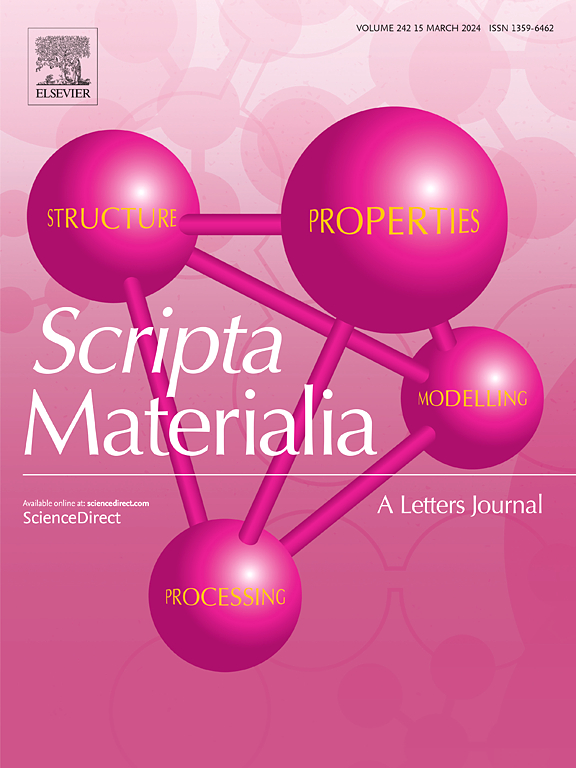First-principles calculations of hydrogen trapping energy at an edge dislocation core in iron
IF 5.6
2区 材料科学
Q2 MATERIALS SCIENCE, MULTIDISCIPLINARY
引用次数: 0
Abstract
Understanding the mechanism of hydrogen embrittlement in steel requires knowledge of hydrogen trapping behavior at lattice defects in iron. However, first-principles calculations using atomistic modeling of an edge dislocation core in body-centered cubic ferromagnetic iron remain challenging because they require several hundred atoms for the core structure and must account for the influence of a long-range strain field around the core. We calculated the hydrogen trapping energies at iron’s most common edge dislocation core from first principles; we used a relatively small unit cell (378 Fe atoms) containing two cores of opposite signs with periodic boundary conditions. The cell size dependence of the hydrogen trapping energies was estimated using a recently developed machine-learning neural network potential for the iron-hydrogen system. Although the small cell size led to overestimating the trapping energy, it was less than 10 %.

铁中边缘位错核中氢捕获能的第一性原理计算
理解钢中氢脆的机理需要了解铁晶格缺陷处的氢捕获行为。然而,利用体心立方铁磁中边缘位错核的原子模型进行第一性原理计算仍然具有挑战性,因为它们需要数百个原子来构成核结构,并且必须考虑到核周围远程应变场的影响。从第一性原理计算了铁最常见的边位错核的氢俘获能;我们使用了一个相对较小的单元电池(378个铁原子),包含两个具有周期边界条件的相反符号的核心。利用最近开发的铁氢系统的机器学习神经网络电位,估计了氢捕获能对细胞大小的依赖性。虽然小的电池尺寸导致高估了捕获能量,但它小于10%。
本文章由计算机程序翻译,如有差异,请以英文原文为准。
求助全文
约1分钟内获得全文
求助全文
来源期刊

Scripta Materialia
工程技术-材料科学:综合
CiteScore
11.40
自引率
5.00%
发文量
581
审稿时长
34 days
期刊介绍:
Scripta Materialia is a LETTERS journal of Acta Materialia, providing a forum for the rapid publication of short communications on the relationship between the structure and the properties of inorganic materials. The emphasis is on originality rather than incremental research. Short reports on the development of materials with novel or substantially improved properties are also welcomed. Emphasis is on either the functional or mechanical behavior of metals, ceramics and semiconductors at all length scales.
 求助内容:
求助内容: 应助结果提醒方式:
应助结果提醒方式:


